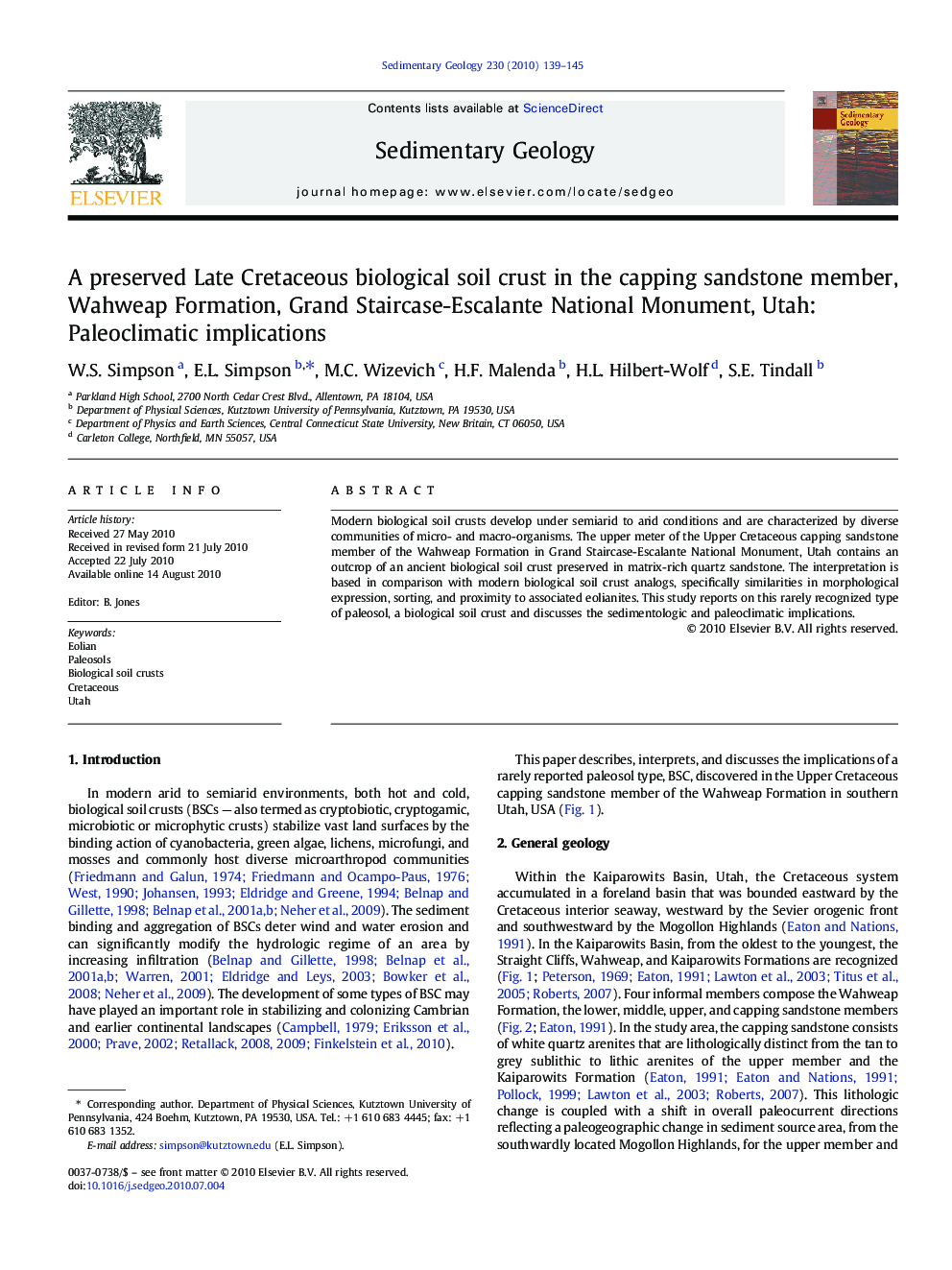| Article ID | Journal | Published Year | Pages | File Type |
|---|---|---|---|---|
| 4689939 | Sedimentary Geology | 2010 | 7 Pages |
Modern biological soil crusts develop under semiarid to arid conditions and are characterized by diverse communities of micro- and macro-organisms. The upper meter of the Upper Cretaceous capping sandstone member of the Wahweap Formation in Grand Staircase-Escalante National Monument, Utah contains an outcrop of an ancient biological soil crust preserved in matrix-rich quartz sandstone. The interpretation is based in comparison with modern biological soil crust analogs, specifically similarities in morphological expression, sorting, and proximity to associated eolianites. This study reports on this rarely recognized type of paleosol, a biological soil crust and discusses the sedimentologic and paleoclimatic implications.
Research Highlights► Cretaceous age Biological Soil Crust is described and interpreted. ► Biological Soil Crusts have rarely been reported from the rock record. ► The presence of a preserved biological soil crust indicates a semi-arid to arid climate was present.
